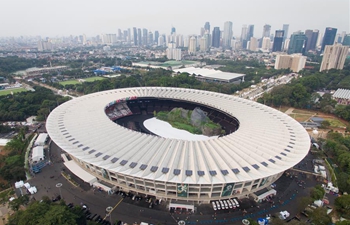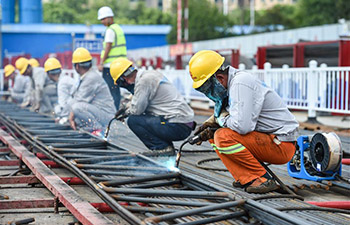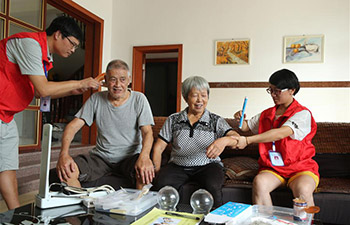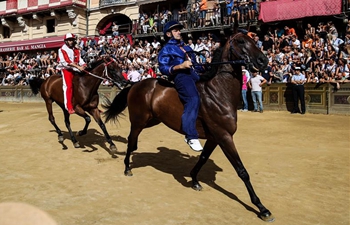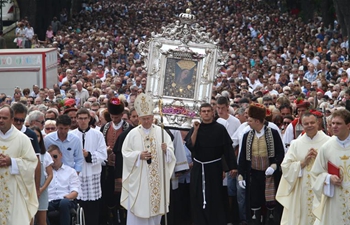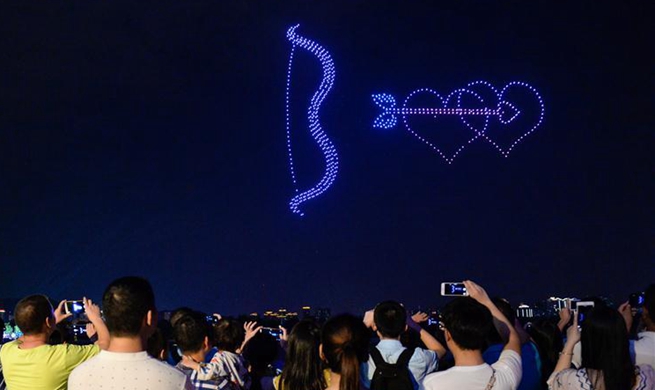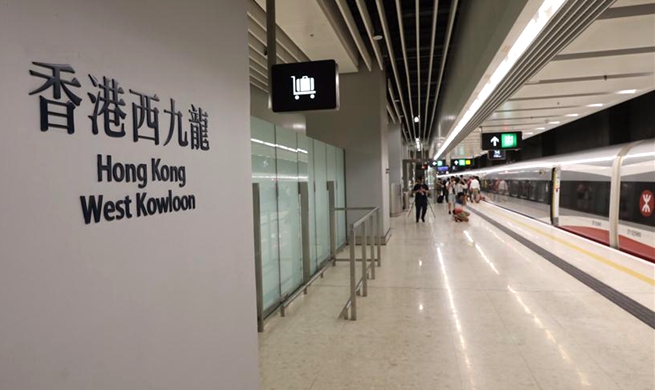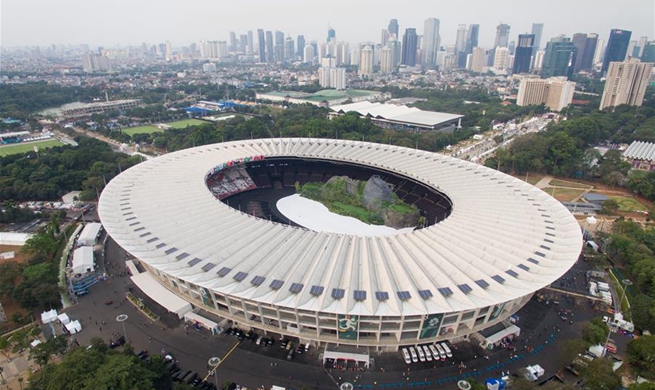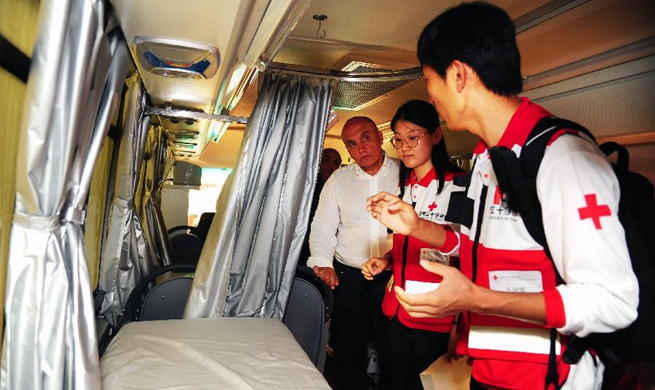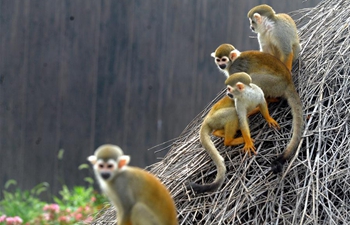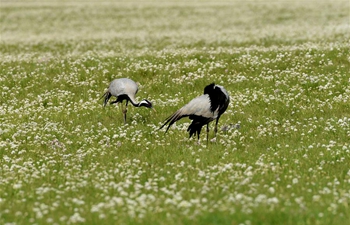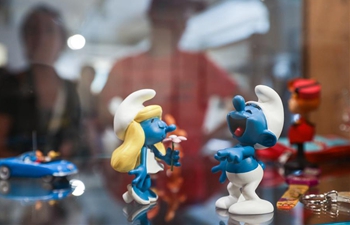MANILA, Aug. 17 (Xinhua) -- The Philippine aviation authorities said a runway in Manila international airport will remain close until 7 p.m. local time on Friday as efforts go on to extract a damaged Chinese passenger plane from the grass by the runway.
Manila International Airport Authority (MIAA) General Manager Ed Monreal told a news conference they needed more time to remove the plane of the Xiamen Airlines, as the soft soil is hampering efforts to remove the Boeing 737-800 aircraft.
The runway was initially planned to be closed until midday on Friday. Authorities extended the closure to 4 p.m. A few hours later, authorities again extended the closure by another three hours.
"I hope there is no more extension (after the third extension)," Monreal said, expressing hope that the recovery will be completed by 7 p.m. local time.
"What is important now is to open the runway so we can continue with the services," he added.
The Civil Aviation Authority of the Philippines (CAAP) said the MF8667 flight suffered "runway excursion" after landing on late Thursday night. The plane skidded off the runway and onto the grass at the Manila international airport after a "missed approach" due to "heavy downpour."
All 157 passengers and eight crew were safely evacuated and were billeted in a hotel, the CAAP and MIAA said.
The damaged major runway has been closed for at least 12 hours, causing flight cancellations, delays and diversion to other airports of international and domestic flights. Thousands of passengers flock at the airports' departure area waiting for the resumption of the flights.
Monreal added that the plane's main landing gear collapsed making it difficult to extract the plane from the "soggy" grass safety patch.
He said they needed telescopic cranes to lift the damaged aircraft, adding it was the only way to extract the aircraft. Extracting the aircraft is the last step, as they already cleared the runway of debris.
When asked about the cause of the accident, Monreal said the investigations continued, adding they were piecing together evidence like tire-marks.
"The critical point here is the flight data recorder and the cockpit voice recorder," CAAP Director General Jim Sydiongco said.
Until all data were gathered, Sydiongco said they could not make any conclusion as to the cause of the accident.
